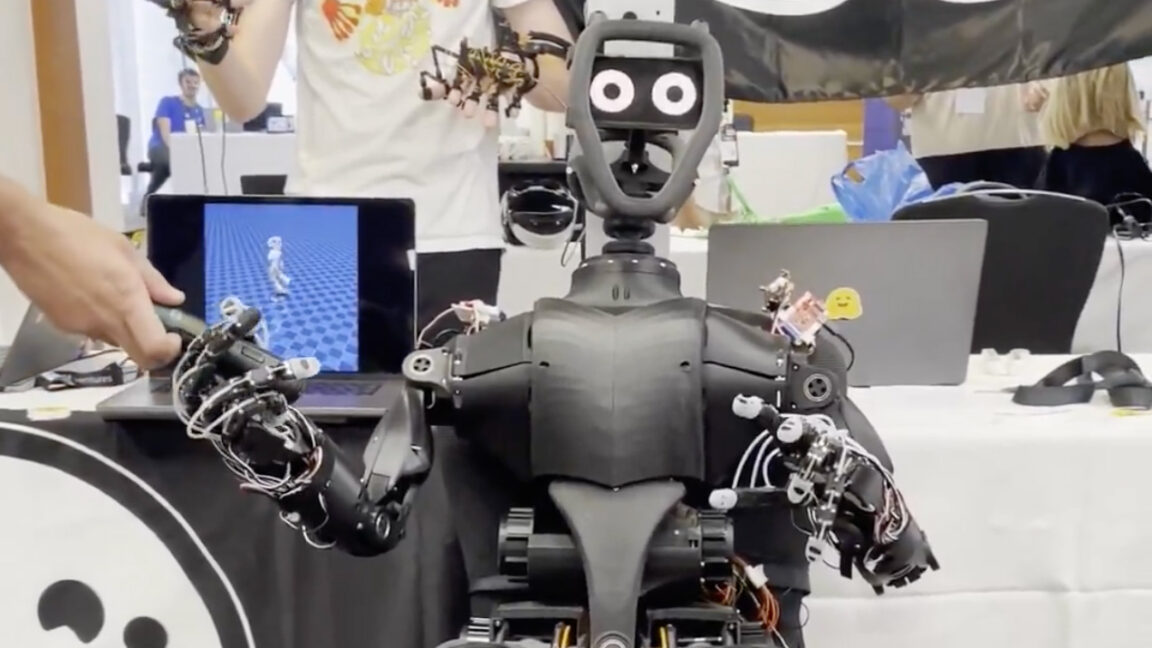
Hugging Face is best known as a platform for machine learning and AI development, but it has also been dabbling in the world of robotics. This week, the company revealed two new robots it plans to bring to market—including a humanoid one that it would sell for around $3,000, far less than many of the other options that have been floated, like Unitree's $16,000 G1.
Dubbed the HopeJR, Hugging Face's robot has up to 66 actuated degrees of freedom. According to Hugging Face Principal Research Scientist Remi Cadene, it can walk and manipulate objects. As shown in a short X video, it has an accessible look that reminds us a bit of Bender from Futurama. (It's the eyes.)
Co-designed with French robotics company The Robot Studio, HopeJR will be open source. "The important aspect is that these robots are open source, so anyone can assemble, rebuild, [and] understand how they work, and [they’re] affordable, so that robotics doesn’t get dominated by just a few big players with dangerous black-box systems," Hugging Face CEO Clem Delangue told TechCrunch.
You may have noticed he said "robots" plural—that's because there's a second one. It's called Reachy Mini, and it looks like a cute, Wall-E-esque statue bust that can turn its head and talk to the user. Among other things, it's meant to be used to test AI applications, and it'll run between $250 and $300.
You can sort of think of these products as the equivalent to a Raspberry Pi, but in robot form and for AI developers—Hugging Face's main customer base.
Hugging Face has previously released AI models meant for robots, as well as a 3D-printable robotic arm. This year, it announced an acquisition of Pollen Robotics, a company that was working on humanoid robots. Hugging Face's Cadene came to the company by way of Tesla.
For context on the pricing, Tesla's Optimus Gen 2 humanoid robot (while admittedly much more advanced, at least in theory) is expected to cost at least $20,000.
There is a lot of investment in robotics like this, but there are still big barriers—and price isn't the only one. There's battery life, for example; Unitree's G1 only runs for about two hours on a single charge.

-
 C114 Communication Network
C114 Communication Network -
 Communication Home
Communication Home


